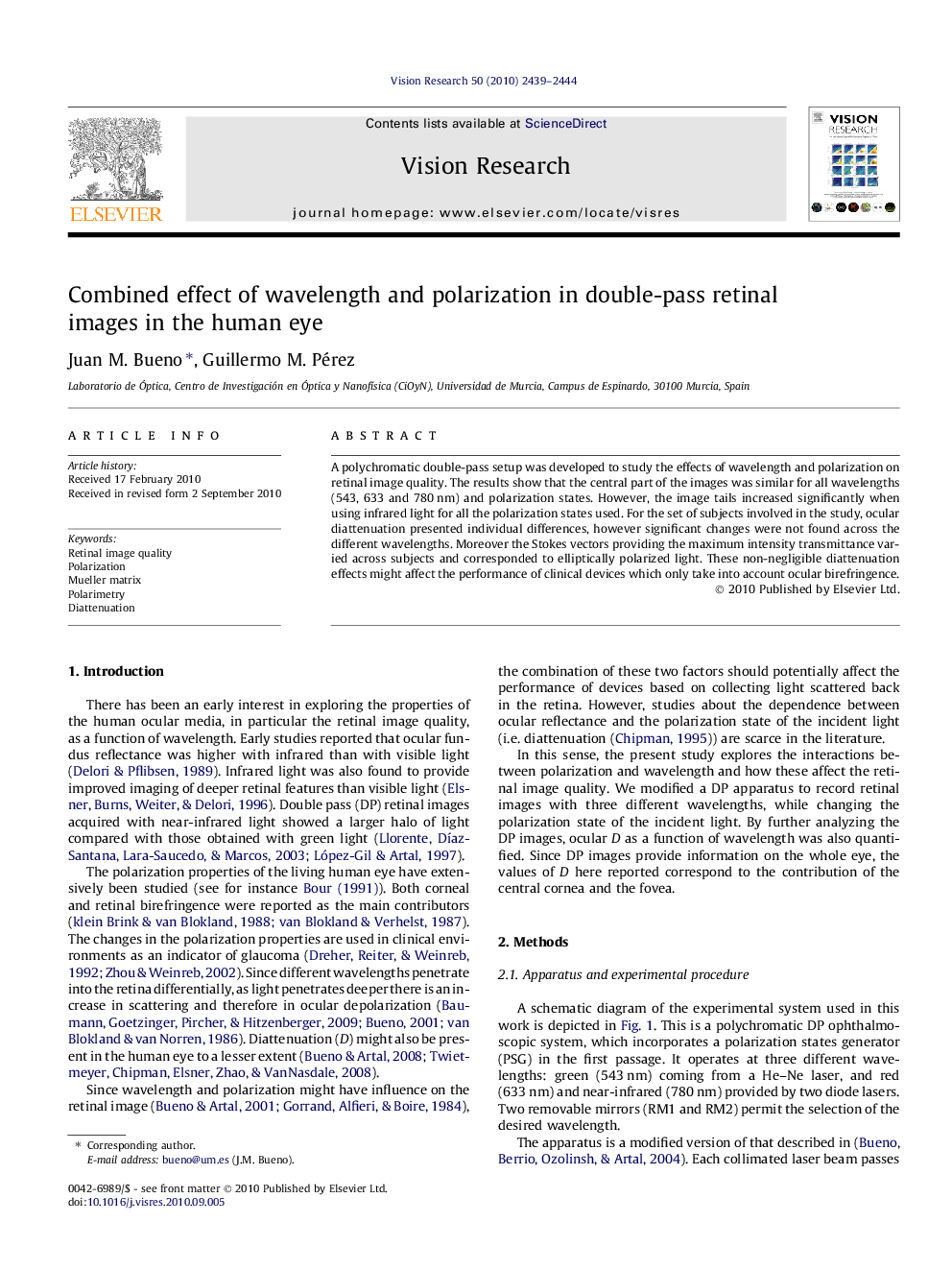| Article ID | Journal | Published Year | Pages | File Type |
|---|---|---|---|---|
| 6203809 | Vision Research | 2010 | 6 Pages |
A polychromatic double-pass setup was developed to study the effects of wavelength and polarization on retinal image quality. The results show that the central part of the images was similar for all wavelengths (543, 633 and 780Â nm) and polarization states. However, the image tails increased significantly when using infrared light for all the polarization states used. For the set of subjects involved in the study, ocular diattenuation presented individual differences, however significant changes were not found across the different wavelengths. Moreover the Stokes vectors providing the maximum intensity transmittance varied across subjects and corresponded to elliptically polarized light. These non-negligible diattenuation effects might affect the performance of clinical devices which only take into account ocular birefringence.
Research highlights⺠Polychromatic double-pass system with polarimetric applications. ⺠No differences in the inner part of the retinal double-pass images with green, red and infrared light. ⺠Infrared light increases the intensity of the tails in the double-pass retinal images for all polarization states. ⺠Non-negligible ocular diattenuation effects and inter-subject variability.
